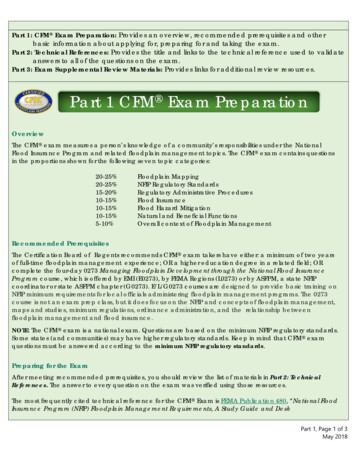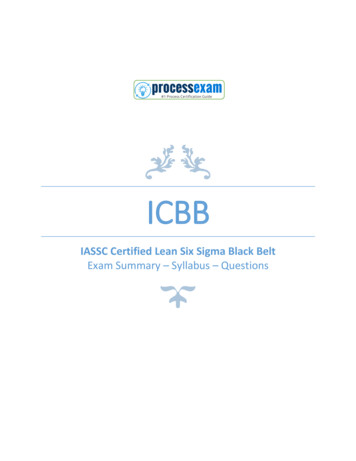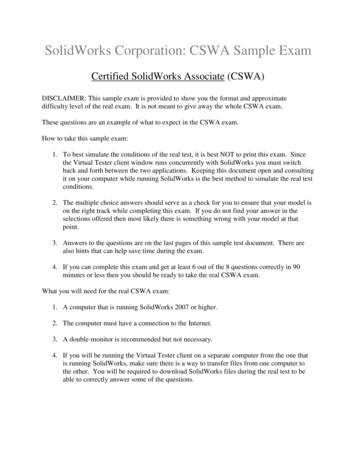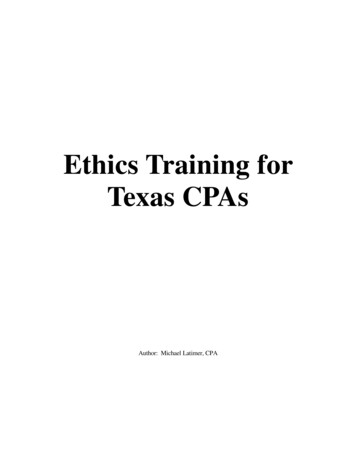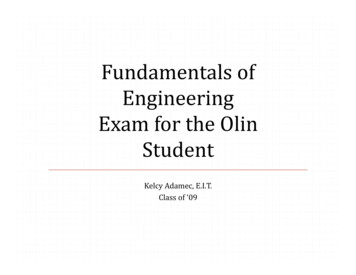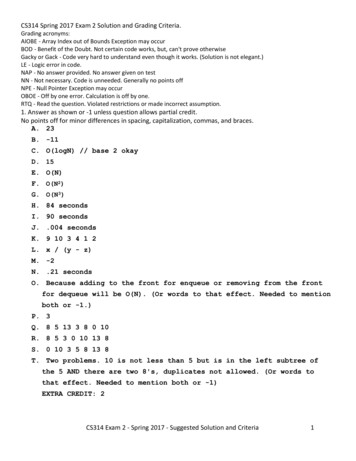
Transcription
CS314 Spring 2017 Exam 2 Solution and Grading Criteria.Grading acronyms:AIOBE - Array Index out of Bounds Exception may occurBOD - Benefit of the Doubt. Not certain code works, but, can't prove otherwiseGacky or Gack - Code very hard to understand even though it works. (Solution is not elegant.)LE - Logic error in code.NAP - No answer provided. No answer given on testNN - Not necessary. Code is unneeded. Generally no points offNPE - Null Pointer Exception may occurOBOE - Off by one error. Calculation is off by one.RTQ - Read the question. Violated restrictions or made incorrect assumption.1. Answer as shown or -1 unless question allows partial credit.No points off for minor differences in spacing, capitalization, commas, and braces.A. 23B. -11C. O(logN) // base 2 okayD. 15E. O(N)F. O(N2)G. O(N3)H. 84 secondsI. 90 secondsJ. .004 secondsK. 9 10 3 4 1 2L. x / (y - z)M. -2N. .21 secondsO. Because adding to the front for enqueue or removing from the frontfor dequeue will be O(N). (Or words to that effect. Needed to mentionboth or -1.)P. 3Q. 8 5 13 3 8 0 10R. 8 5 3 0 10 13 8S. 0 10 3 5 8 13 8T. Two problems. 10 is not less than 5 but is in the left subtree ofthe 5 AND there are two 8's, duplicates not allowed. (Or words tothat effect. Needed to mention both or -1)EXTRA CREDIT: 2CS314 Exam 2 - Spring 2017 - Suggested Solution and Criteria1
2. Comments. A relatively simple linked list problem that required moving through two linked listsCommon Problems: missing the last or first node not comparing data correctly not handling null data correctlypublic int getNumDifferences (LinkedList314 E other) {Node E nThis this.first;Node E nOther other.first;int result 0;while (nThis ! null && nOther ! null) {E dataThis nThis.data;E dataOther nOther.data;if (dataThis null dataOther null) {if (dataThis ! dataOther) {result ; // not both null}} else if (!dataThis.equals(dataOther)) {result :}nThis nThis.next;nOther nOther.next;}// count remaining items in longer listNode E n (nThis ! null) ? nThis : nOther;while (n ! null) {result ;n n.next;}return result;}20 points , Criteria: 2 temp variables, 1 point track number of differences, 1 point loop until one of temps is null, 3 pointsOff By One Error (OBOE) due to n.next ! null correctly handle case when one or both data values is null, 2 points correctly call equals on data elements and increment result if not equal, 3 points-2 for comparing nodes instead of data, -2 if use compareTo instead of equals, -2 for instead of .equals-2 for counting equal values instead of different values !n1.data.equals(n2.data) move both references, 5 points move through larger list, counting number of elements left, 4 point return result, 1 pointOther penalties:using disallowed methods, -6 (can be less for severity)destroy either list, -6CS314 Exam 2 - Spring 2017 - Suggested Solution and Criteria2
3. Comments: A relatively simple stack question. Very similar to the reversing the stack question from lectureCommon problems: using two stacks (not allowed per description) not restoring stacks (early return of false) not stopping at first difference we didn't take off for this (in retrospect we should have) but some people tried to get clever and just push oneof the equal items on to the temp stack. The items are equal, so why does it matter if I store one or two. Theproblem with this is we are storing references and if the objects are mutable putting the same reference ontotwo different stacks could lead to hard to find logic errors if one of the objects is altered, thus altering the "otherone" although there is really only one object not both stacks are empty after the first differencepublic E boolean stacksAreEqual(Stack314 E s1, Stack314 E s2) {Stack314 E tempStack new Stack314 ();boolean equal true;while (!s1.isEmpty() && !s2.isEmpty() && equal) {// OR !(s1.isEmpty() s2.isEmpty()) && equalequal ;tempStack.push(s2.pop());}// make sure both stacks are emptyequal equal && s1.isEmpty() && s2.isEmpty();// Now put the stuff we took out back.while (!tempStack.isEmpty()) ;}return equal;}20 points, Criteria: create temp stack, 1 point loop until one or both of stacks are empty, 4 points stop when first difference occurs, efficiency, 3 points properly remove elements from stacks and place in temp stack, 4 points(if equal can, just add one) check both stacks empty after main loop and update result correctly, 3 points properly put items back in original stacks (order of push's must be reversed), 5 points(or if only pushed one, add back to both)Other deductions: using data temp data structure besides a single Stack, -6 using two stacks instead of 1, -3 using compareTo instead of equals, -2CS314 Exam 2 - Spring 2017 - Suggested Solution and Criteria3
4. Comments: An interesting map problem with two partsCommon problems: Creating an extra data structure. I chose to take off for this because the question did not allow the use of a Mapconstructor. Co-modification error. Without the ability to use another data structure if you remove from the map using, themap remove method, in the middle of a for-each loop or an iteration, a co-modification error is thrown. It wasnecessary to explicitly use the iterator for the keyset and remove via the iterator which does in fact remove fromthe map. Not checking if the target value is actually present Removing the target point itself.Suggested Solution:private static void removePointsHalfAverageDistance(Map String, Point m,String target) {Point center m.get(target);if (center ! null) {int x center.getX();int y center.getY();double total 0.0;for (String key : m.keySet()) {Point p m.get(key);int x2 p.getX();int y2 p.getY();total Math.sqrt(Math.pow(x - x2, 2) Math.pow(y - y2, 2));}double halfAve total / (m.size() - 1) / 2;Iterator String it m.keySet().iterator();while (it.hasNext()) {String key it.next();Point p m.get(key);int x2 p.getX();int y2 p.getY();double distance Math.sqrt(Math.pow(x - x2, 2) Math.pow(y - y2, 2));if (distance halfAve && !key.equals(target)) {it.remove();}}}}20 points, Criteria: check target present, 1 point loop through keys, 3 points determine distance between current point and target, 4 points determine correct average distance, 3 points remove key-values that are less than half the average distance, 3 points avoid co-modification error by using iterator remove method, 3 points does not remove target key-value pair, 3 pointsOthers: New data structure -3CS314 Exam 2 - Spring 2017 - Suggested Solution and Criteria4
5. Comments: A very interesting recursive back tracking problem, because what and when we return varies based on ifthe current player is the goal player or not.Common problems: Incorrect base case (must check gameOver()) Not handling the two approaches based on goal cur and goal 1 cur returning early not using return value to determine what to do.Suggested Solution: (Gacky with repeated code, but possibly easier to understand)public boolean canWin(ConnectFourBoard b, char goal, char cur) {// base caseif (b.gameOver()) {return b.winner() goal;} else {char next cur 'b' ? 'r' : 'b';if (goal cur) {// looking for a winning move to return truefor (int col 0; col ConnectFourBoard.NUM COL; col ) {if (b.columnisOpen(col)) {b.dropPiece(col, cur);boolean won canWin(b, goal, next);b.pickUpTopChecker(col);if (won)return true;}}return false; // the goal player can't find a win} else {// looking for any non-win to prevent goal from winningfor (int col 0; col ConnectFourBoard.NUM COL; col ) {if (b.columnisOpen(col)) {b.dropPiece(col, cur);boolean won canWin(b, goal, next);b.pickUpTopChecker(col);if (!won)return false;}}return true; // The goal player can win no matter what we do!!}}}20 points, Criteria: correctly handle base case, 4 points determine color of next checker correctly, 2 points loop through choices (columns) in recursive case, 1 point place and remove the next checker correctly, 2 points make correct recursive call, and use result correctly (not returning early, but returning if desired answer found),5 points handle the two cases of goal cur and goal ! cur correctly, 4 points return correctly if none of the choices in the recursive case were desired answer, 2 pointsCS314 Exam 2 - Spring 2017 - Suggested Solution and Criteria5
correctly call equals on data elements and increment result if not equal, 3 points -2 for comparing nodes instead of data, -2 if use compareTo instead of equals, -2 for instead of .equals -2 for counting equal values instead of different values !n1.data.equals(n2.data) move both references, 5 points



